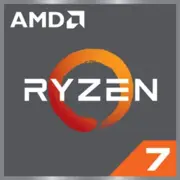AMD Ryzen 7 8700GE

The AMD Ryzen 7 8700GE processor is a powerhouse for any desktop system. With a total of 8 cores and 16 threads, this processor offers incredible multitasking capabilities and high speed performance. The 4 nm technology ensures efficient power usage and lower heat generation, making it a great option for those looking to build a more energy-efficient system.
The 16 MB L3 cache provides ample memory for quick access to frequently used data, resulting in faster overall system performance. The integrated Radeon 780M graphics model offers decent graphics capabilities for casual gaming and multimedia tasks, making it a versatile option for a wide range of users.
One of the standout features of the Ryzen 7 8700GE is its low TDP of 35 W, making it an excellent choice for small form factor systems and those looking to build a quieter, more efficient PC. This processor also boasts the Phoenix code name, signaling its reliability and high performance.
Overall, the AMD Ryzen 7 8700GE processor is a fantastic option for those looking for a powerful, energy-efficient CPU for their desktop system. Its impressive specs and low power consumption make it a great choice for a variety of computing needs.
Basic
Label Name
AMD
Platform
Desktop
Launch Date
April 2024
Model Name
?
The Intel processor number is just one of several factors - along with processor brand, system configurations, and system-level benchmarks - to be considered when choosing the right processor for your computing needs.
Ryzen 7 8700GE
Code Name
Phoenix
CPU Specifications
Total Cores
?
Cores is a hardware term that describes the number of independent central processing units in a single computing component (die or chip).
8
Total Threads
?
Where applicable, Intel® Hyper-Threading Technology is only available on Performance-cores.
16
Basic Frequency
3.6 GHz
Max Turbo Frequency
?
Max Turbo Frequency is the maximum single-core frequency at which the processor is capable of operating using Intel® Turbo Boost Technology and, if present, Intel® Turbo Boost Max Technology 3.0 and Intel® Thermal Velocity Boost. Frequency is typically measured in gigahertz (GHz), or billion cycles per second.
up to 4.8 GHz
L1 Cache
64 KB (per core)
L2 Cache
1 MB (per core)
L3 Cache
16 MB (shared)
CPU Socket
?
The socket is the component that provides the mechanical and electrical connections between the processor and motherboard.
AMD Socket AM5
Technology
?
Lithography refers to the semiconductor technology used to manufacture an integrated circuit, and is reported in nanometer (nm), indicative of the size of features built on the semiconductor.
4 nm
TDP
35 W
Max. Operating Temperature
?
Junction Temperature is the maximum temperature allowed at the processor die.
95°C
PCI Express Version
?
PCI Express Revision is the supported version of the PCI Express standard. Peripheral Component Interconnect Express (or PCIe) is a high-speed serial computer expansion bus standard for attaching hardware devices to a computer. The different PCI Express versions support different data rates.
Gen 4, 20 Lanes (CPU only)
Memory Specifications
Memory Type
?
Intel® processors come in four different types: Single Channel, Dual Channel, Triple Channel, and Flex Mode. Maximum supported memory speed may be lower when populating multiple DIMMs per channel on products that support multiple memory channels.
DDR5
Memory Channels
?
The number of memory channels refers to the bandwidth operation for real world application.
Dual-channel
GPU Specifications
Integrated Graphics Model
?
An integrated GPU refers to the graphics core that is integrated into the CPU processor. Leveraging the processor's powerful computational capabilities and intelligent power efficiency management, it delivers outstanding graphics performance and a smooth application experience at a lower power consumption.
Radeon 780M
Benchmarks
Geekbench 6
Single Core
Score
2751
Geekbench 6
Multi Core
Score
12734
Compared to Other CPU
Geekbench 6 Single Core
Geekbench 6 Multi Core
Share in social media
Or Link To Us
<a href="https://cputronic.com/en/cpu/amd-ryzen-7-8700ge" target="_blank">AMD Ryzen 7 8700GE</a>